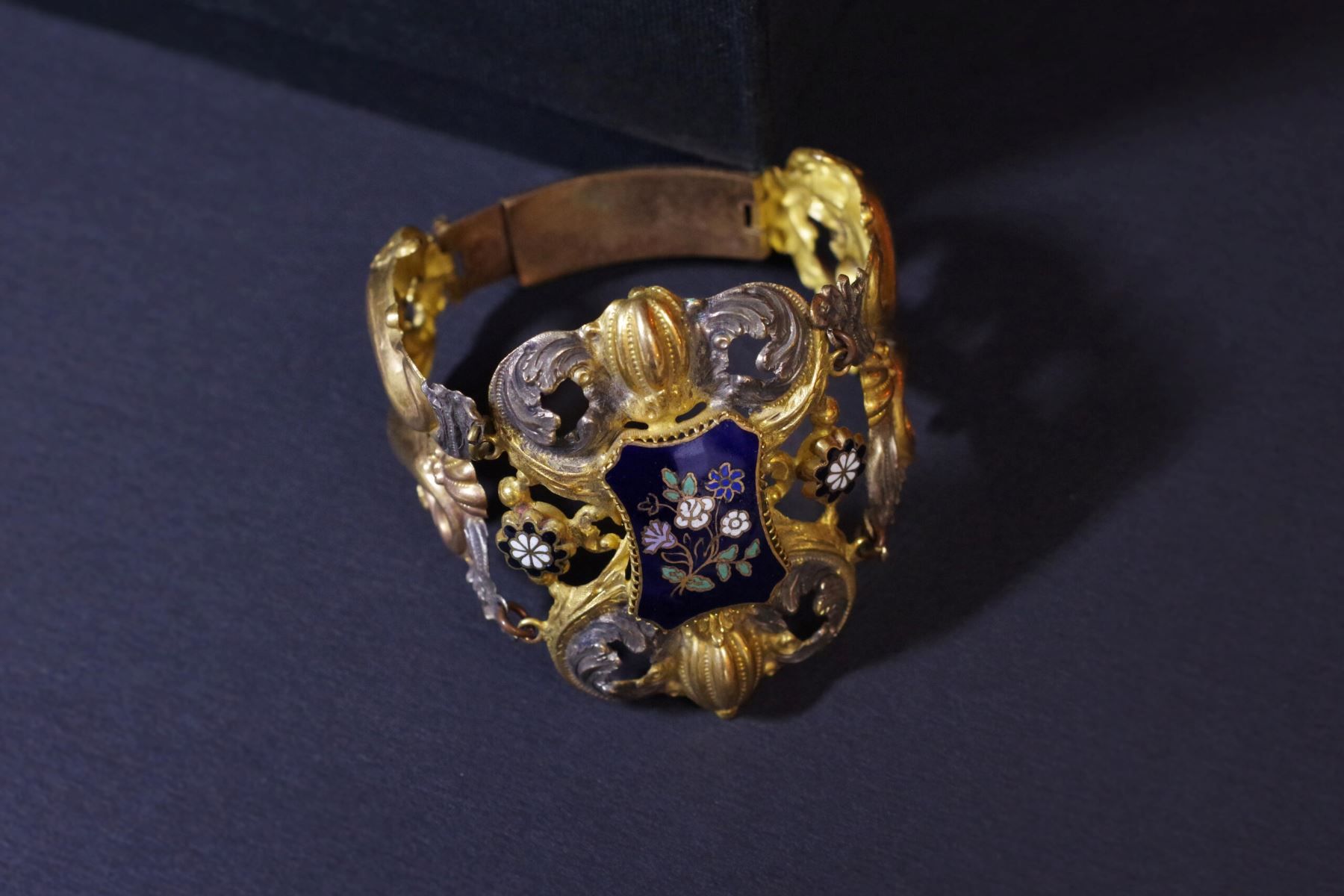
Pinchbeck is a fascinating material with a rich history. Ever wondered what makes it so special? Pinchbeck is an alloy that looks like gold but isn't. Created by Christopher Pinchbeck in the 18th century, this blend of copper and zinc became popular for making affordable jewelry. People loved it because it had the appearance of gold without the high cost. This made it accessible to many who couldn't afford real gold. Today, Pinchbeck pieces are collectible items, valued for their historical significance and unique charm. Ready to learn more? Let's dive into 40 intriguing facts about Pinchbeck!
Key Takeaways:
- Pinchbeck, an 18th-century brass substitute for gold, was invented by Christopher Pinchbeck and became popular for affordable jewelry. Its history is intertwined with the innovative clockmaker's life and work.
- Pinchbeck's influence extends to literature, fashion, and art, making it a fascinating subject for collectors. Its unique history and popularity in popular culture make it a valuable and rewarding addition to antique collections.
What is Pinchbeck?
Pinchbeck is a term that might sound unfamiliar, but it has an interesting history. It refers to a type of brass, an alloy of copper and zinc, used as a substitute for gold. Let's dive into some fascinating facts about Pinchbeck.
-
Pinchbeck was invented by Christopher Pinchbeck, an 18th-century London clockmaker. He created this alloy to provide a cheaper alternative to gold.
-
The alloy consists of copper and zinc. Typically, it contains about 83% copper and 17% zinc, giving it a gold-like appearance.
-
Pinchbeck was popular in the 18th and 19th centuries. It was widely used for making affordable jewelry and watch cases.
-
Christopher Pinchbeck patented his invention. This helped him maintain control over the production and sale of the alloy.
-
Pinchbeck jewelry was often indistinguishable from gold. Its appearance was so convincing that it became a popular choice for those who couldn't afford real gold.
-
The term "Pinchbeck" became synonymous with imitation. Over time, it came to describe anything that was a cheap imitation of something valuable.
-
Pinchbeck was used in theatrical costumes. Actors and actresses wore Pinchbeck jewelry on stage to give the illusion of wealth.
-
The alloy tarnishes over time. Unlike gold, Pinchbeck can lose its luster and develop a patina.
-
Pinchbeck items are now collectible. Antique Pinchbeck jewelry and watches are sought after by collectors.
-
The invention of electroplating diminished Pinchbeck's popularity. Electroplating allowed for a thin layer of gold to be applied to base metals, providing a more durable alternative.
The Man Behind Pinchbeck
Christopher Pinchbeck's life and work are as intriguing as the alloy he created. Let's explore some facts about this innovative clockmaker.
-
Christopher Pinchbeck was born in 1670. He lived during a time of great innovation and change in England.
-
He was a skilled clockmaker. Pinchbeck's clocks were known for their precision and craftsmanship.
-
Pinchbeck's workshop was located in Fleet Street, London. This area was a hub for artisans and craftsmen.
-
He created musical clocks. These clocks played tunes and were highly sought after by the wealthy.
-
Pinchbeck's sons continued his work. After his death in 1732, his sons carried on the family business.
-
He was a member of the Worshipful Company of Clockmakers. This prestigious guild recognized his contributions to the craft.
-
Pinchbeck's clocks are now valuable antiques. Collectors prize them for their historical significance and beauty.
-
He was known for his ingenuity. Pinchbeck's ability to create a convincing gold substitute was just one example of his inventive mind.
-
Pinchbeck's name lives on. Though the alloy is no longer widely used, his name remains associated with imitation gold.
-
He was a pioneer in his field. Pinchbeck's work laid the groundwork for future innovations in metallurgy and horology.
Pinchbeck in Popular Culture
Pinchbeck has made its mark not just in history but also in popular culture. Here are some interesting ways it has appeared.
-
Pinchbeck is mentioned in literature. Authors like Charles Dickens have referenced it in their works.
-
It appears in period dramas. TV shows and movies set in the 18th and 19th centuries often feature Pinchbeck jewelry.
-
Pinchbeck is a subject of academic study. Historians and metallurgists study it to understand historical manufacturing techniques.
-
It has inspired modern designers. Some contemporary jewelers create pieces inspired by Pinchbeck designs.
-
Pinchbeck is part of museum collections. Institutions like the British Museum have Pinchbeck items on display.
-
It has been featured in antique shows. Programs like "Antiques Roadshow" have appraised Pinchbeck items.
-
Pinchbeck is a topic in historical novels. Writers use it to add authenticity to their stories set in the past.
-
It has influenced fashion trends. Vintage Pinchbeck jewelry has inspired modern fashion designers.
-
Pinchbeck is a term used in art. Artists use it to describe works that imitate more valuable materials.
-
It has a place in numismatics. Some coins and medals were made from Pinchbeck.
Collecting Pinchbeck
For those interested in antiques, Pinchbeck offers a unique collecting opportunity. Here are some facts about collecting Pinchbeck items.
-
Pinchbeck jewelry is highly collectible. Pieces from the 18th and 19th centuries are especially prized.
-
Condition affects value. Well-preserved items fetch higher prices at auctions.
-
Authenticity is crucial. Collectors must be able to distinguish genuine Pinchbeck from other imitations.
-
Pinchbeck watches are rare. These timepieces are sought after by horology enthusiasts.
-
Provenance adds value. Items with a documented history are more valuable.
-
Restoration can affect value. Restored pieces may not be as valuable as those in original condition.
-
Pinchbeck items can be found in antique shops. They are also available at auctions and online marketplaces.
-
Collectors should be aware of fakes. Some modern reproductions are passed off as genuine antiques.
-
Pinchbeck is a niche market. While not as well-known as gold or silver, it has a dedicated following.
-
Collecting Pinchbeck can be rewarding. It offers a glimpse into the past and the ingenuity of its creator.
Final Thoughts on Pinchbeck
Pinchbeck, a fascinating alloy, has a rich history and unique properties. Created by Christopher Pinchbeck in the 18th century, this blend of copper and zinc mimics gold's appearance without the hefty price tag. It became popular for making affordable yet attractive jewelry and watch cases. Over time, its use declined as gold plating techniques improved, but it remains a symbol of ingenuity and resourcefulness.
Understanding Pinchbeck's composition and historical significance offers insight into the evolution of materials used in decorative arts. This alloy's story highlights the human drive to innovate and create beauty accessible to many. Whether you're a history buff, a jewelry enthusiast, or just curious, Pinchbeck's tale is a testament to creativity and practicality. So next time you see a piece of jewelry, remember the clever alloy that once dazzled the world.
Frequently Asked Questions
Was this page helpful?
Our commitment to delivering trustworthy and engaging content is at the heart of what we do. Each fact on our site is contributed by real users like you, bringing a wealth of diverse insights and information. To ensure the highest standards of accuracy and reliability, our dedicated editors meticulously review each submission. This process guarantees that the facts we share are not only fascinating but also credible. Trust in our commitment to quality and authenticity as you explore and learn with us.


